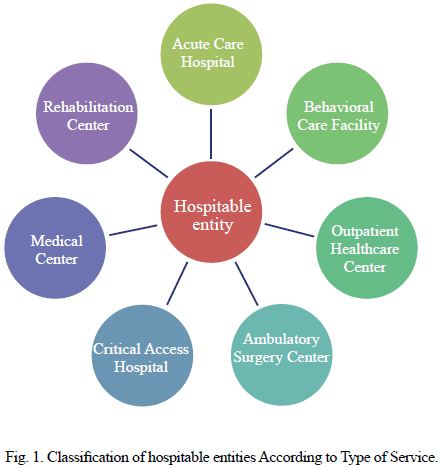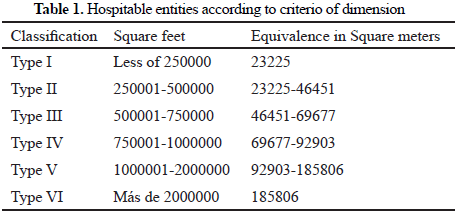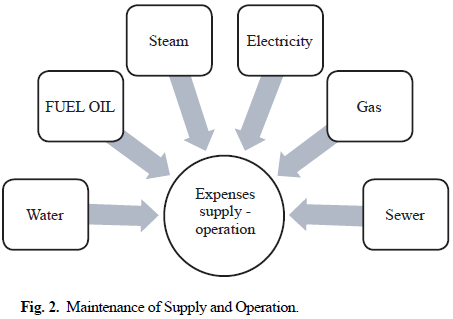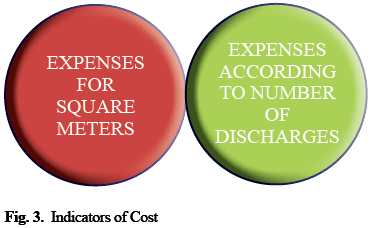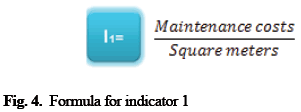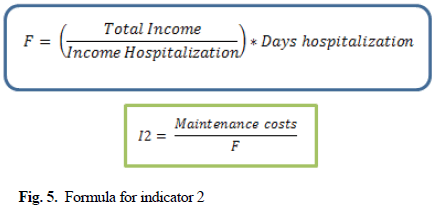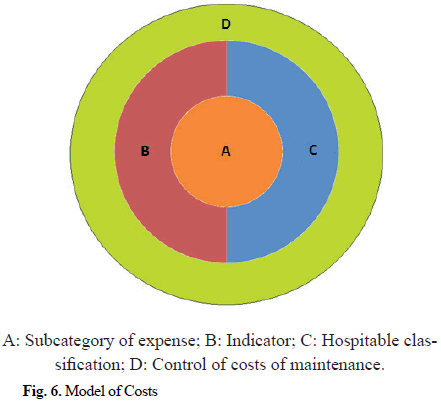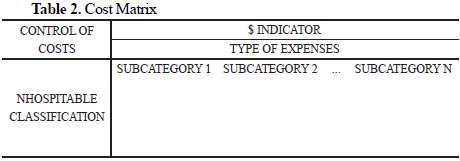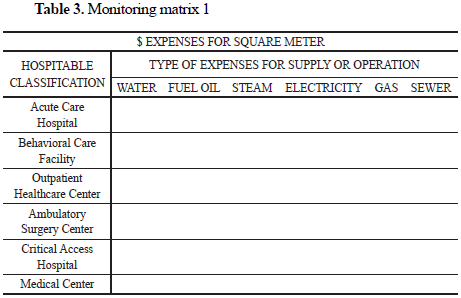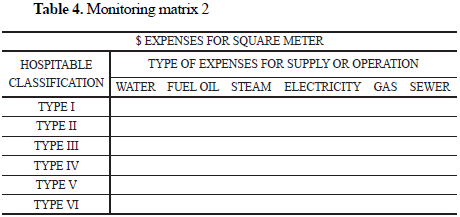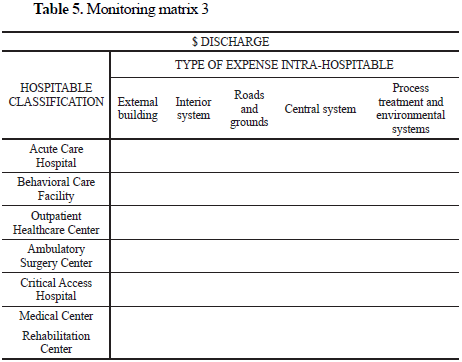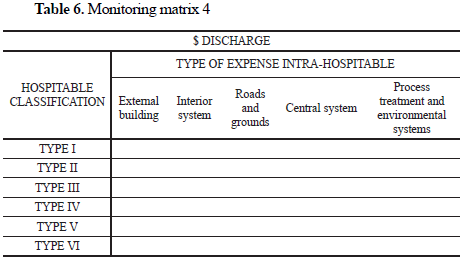Services on Demand
Journal
Article
Indicators
-
 Cited by SciELO
Cited by SciELO -
 Access statistics
Access statistics
Related links
-
 Cited by Google
Cited by Google -
 Similars in
SciELO
Similars in
SciELO -
 Similars in Google
Similars in Google
Share
Revista Ingeniería Biomédica
Print version ISSN 1909-9762
Rev. ing. biomed. vol.9 no.18 Medellín July/Dec. 2015
MAINTENANCE COST CONTROL MODEL OF CLINICAL ENGINEERING DEPARTMENTS IN COLOMBIA HEALTHCARE CENTERS
MODELO DE CONTROL DE COSTOS DE MANTENIMIENTO DE LOS DEPARTAMENTOS DE INGENIERÍA CLÍNICA EN LOS CENTROS DE SALUD EN COLOMBIA
MODELO DE CONTROLE DE CUSTOS DE MANUTENÇÃO DOS DEPARTAMENTOS DE ENGENHARIA CLÍNICA NOS CENTROS DE SAÚDE NA COLÔMBIA
M. E. Andrade1, J.G. Barreneche2, M. Trujillo3
1 Departamento de Ingeniería Biomédica, Hospital Universitario de San Vicente Fundación, Medellín, Colombia.
2 Facultad de Ingeniería, Universidad de Antioquia, Medellín, Colombia.
Dirección para correspondencia: revistabme@eia.edu.co.
3 Gestión de Tecnología, Hospital Universitario de San Vicente Fundación, Medellín, Colombia.
ABSTRACT
This article presents a practical guidance model for clinics and hospitals of the Colombian national territory that provides technical support in the process of construction and consolidation of a schematic that shows the real cost inside their clinical engineering departments. For that purpose, an exhaustive technological vigilance has been done, relating to subject matter that compete with the managing cost in hospitable entities of diverse countries in the international arena. In addition, the study accumulates literary demonstrated in benchmarking developed by clinical - hospitable establishments of nations with out-standing standards of quality worldwide. Finally, all the information gathered is brought to the Colombian context to be applicable to the national healthcare system, and to be able to meet regulations and requirements that the Colombian Social Security System requires to clinical engineering departments.
KEYWORDS: Model; Cost; Department; Technological vigilance; Clinical engineering.
RESUMEN
En este artículo se presenta un modelo de orientación práctica para clínicas y hospitales del territorio nacional colombiano, que proporciona apoyo técnico en el proceso de construcción y consolidación de un esquema que muestra el costo real dentro de sus departamentos de ingeniería clínica. Para ello, se ha efectuado una exhaustiva vigilancia tecnológica, en relación con el tema que compita con el costo de gestión en entidades hospitalarias de diversos países en el ámbito internacional. Además, el estudio se compila literatura de la evaluación comparativa desarrollada por establecimientos clínicos - hospitalarios de las naciones con los mejores estándares de calidad en todo el mundo. Por último, toda la información recogida es llevada al contexto colombiano para ser aplicable al sistema nacional de salud, y para ser facilitar el cumplimiento con las normas y requisitos que el sistema de seguridad social colombiano exige a los departamentos de ingeniería clínica.
PALABRAS CLAVE: Modelo; costo; departamento; vigilancia tecnológica; ingeniería clínica.
RESUMO
Este artigo apresenta um modelo de orientação prática para clínicas e hospitais no território colombiano, que presta apoio técnico no processo de construção e consolidação de um diagrama que mostra o custo real dentro de seus departamentos de engenharia clínica. Para este efeito, procedeu a uma vigilância tecnológica completa, em relação ao assunto que compete com o custo de gestão em entidades hospitalares de diferentes países no âmbito internacional. Além, o estudo se compila literatura da avaliação comparativa desenvolvida por estabelecimentos clínicos-Hospitalares das nações com os mais altos padrões de qualidade em todo o mundo. Finalmente, toda a informação recolhida é levada para o contexto colombiano para ser aplicável ao sistema nacional de saúde, e para facilitar o cumprimento das normas e requisitos que o sistema de segurança social colombiana exige aos departamentos de engenharia clínica.
PALAVRAS-CHAVE: Modelo; Custo; Departamento; Vigilância tecnológica; engenheira clínica.
I. INTRODUCTION
In Colombia the decree 1769 of 1994 rules the components and basic criteria for the assignment and use of financial resources. The decree says that 5% of the total budget of a hospital should be assigned to the maintenance of infrastructure and equipment if the institution is a public hospital, or if it is a private hospital in which the value of the contracts with the nation or state entities represents more than 30% of its total income.
Similarly in the industry, it was found a high number of enterprises that know the cost of maintenance; although there is no total knowledge of the maintenance cost of detailed activities costs such as corrective maintenance, preventive maintenance, systematic maintenance, labor, spares, and third party vendors. Also, industries don't have the knowledge of possible methods to reduce the maintenance cost or even to pursue a designated budget.
Administratively, there is an unfortunate perception and other times assertive opinion that big amounts of money are designated and even wasted in maintenance; in some cases a big percentage of this cost can be reduced substantially. The adequate management of maintenance cost can help enterprises to see the border between being competitive or broke. Like some entities that have perpetuate anachronistic equipment and others that have innovated in technology without been prepared to the challenge of new knowledge and processes [1].
Healthcare is not the exception to this current industry situation. Healthcare centers within local and international accreditation process, have learned that maintenance activities are relevant for equipment, networks and infrastructure of their facilities.
However, nowadays there is no organized maintenance cost management because it has been focused on the creation of engineering departments, optimization of internal and external resources, process improvements, and maintenance planning; but there is still missing a structured and detailed practice to manage the cost of those maintenance activities inside institutions [2].
A model based on cost indicators that allow the exact and reliable measurement of maintenance activities in hospitals is necessary in the process to healthcare center management innovation [3]. This model improves management task and allows establishing a connection between the requirements and the financial resources of the healthcare institutions. Also, it promotes that future strategy decision for financial resources designation provides trust, sustainability, accessibility, and security in the industry environment.
II. METHODOLOGY
Classification of hospitable entities
In Colombia there are many ways to categorize clinics and hospitals. The concepts go from acuity levels, number of beds, geographical location, or health service provide levels. The last one classifies entities in level I, II, III y IV, and it is the most used among healthcare providers.
However, for this study and using new international healthcare system concepts, it is proposed to classify healthcare entities in two key concepts:
- Healthcare service provide
- Healthcare entity size
Classification of healthcare entities based on service provided
There exist 7 manners of categorizing to lending entities of health according to this concept [4]
- Acute Care Hospital: An institution that is primarily engaged in providing diagnostic and therapeutic services for medical diagnosis, treatment, and care, by or under the supervision of physicians, to injured, disabled, or sick persons or rehabilitation services for injured, disabled, or sick persons..
- Behavioral Care Facility: An outpatient treatment center for psychiatric and mental disorders, Alzheimer's and developmentally disabled. Outpatient and psychiatric counseling for substance abuse patients.
- Outpatient Healthcare Center: An outpatient clinic where persons can receive a wide range of medical services including diagnostic services, laboratory services and imaging.
- Ambulatory Surgery Center: Any distinct entity that operates exclusively for the purpose of providing surgical services to patients not requiring hospitalization • Critical Access Hospital: (CAH) are rural community hospitals that receive cost-based reimbursement.
- Medical Center: A large medical complex that provides a comprehensive array of health care services in both outpatient and inpatient settings.
- Rehabilitation Center: A recovery facility oriented toward longterm treatment and training of sick/injured persons so they can function in society. Rehabilitation centers specialize between either physical therapy for trauma/stroke victims.
Classification of hospitable entities according to criterion of dimension
Having the United States as reference for this categorization, the unit of measurement is ground square feet (GSF). Although, this metric system can be convert to the international metric system with a simple conversion table [5-6].
Expenses classification (Maintenance Categories)
Maintenance of Supply and Operation
Expenses associate to electrical supply, potable water, heating, sewage system and air conditioning [7]. The categories of this kind are proportional to the categories used in Colombian healthcare entities.
Maintenance Intra-hospitable
The study divided the cost of maintenance Intrahospitable in five different categories that are defined later:
External building maintenance
- Roof
- Skin (siding, masonry, sash, glazing, window washing, external doors)
- Exterior signage
Interior systems maintenance
- Electrical systems (primary and secondary systems, emergency electrical systems, UPS, lighting systems, egress signage, master clocks, fire/ life safety systems and alarms and remote monitoring, elevator maintenance/repair)
- Mechanical systems (HVAC, chillers, boilers, plumbing, extinguishing systems, back flow prevention, refrigeration and non-process related pumps)
- Device Medicate (Medical equipment, inputs and consumable)
- Building and general maintenance (interior walls, doors, ceilings, partitions and interior finishes, pest control)
- Interior signage
- Administrative support services - trouble desks
Roads and grounds maintenance
- Roadways, sidewalks, parking lots (paving repairs, sealing, striping, parking, roadway lighting, power washing),
- Landscaping (planting, mowing, irrigation)
- Parking structures (surface repairs, sealing, striping, lighting and drainage systems)
- Storm sewers (catch basins, manholes, subsurface drainage systems)
- Underground fire systems and hydrants
Utility/central system maintenance
- Electrical (generation/distribution)
- Mechanical (steam, hot and cold water systems)
- Process treatment and environmental systems
- Process cooling water systems
- Process gas systems
- Air discharge scrubbers
- Waste water systems
- Water treatment plants
- Incinerator operation
- Solid waste management system
Maintenance indicators
The indicators measures the earning power and liquidity of the maintenance activities in a project or organization.
III. RESULTS
Maintenance cost indicators for Clinics or Hospitals
For clinics and hospitals 2 concepts enters as maintenance cost indicators as it shows [8]:
Expenses for square meters (ESM).
The indicator allows the analysis of the correct amount of money invests in the organization and makes a relation with the size per square meters of it.
Expenses according to the number of discharges
As a main purpose, the Clinics and Hospitals must discharge the patients. It is possible to create a ratio between the incomes of the organization and the incomes of the hospitalization of the patient, this ratio assumes that the hospitalization patients develops high incomes for the organization and the same patients are high consumers of engineering services, that is because they spend more care for more time than other types of patients. With that in the hand the ratio explained must be multiplied with the hospitalization days (15), all those terms becomes the "F" factor witch is associated with the maintenance costs and the second indicator are ready [9-10].
Matrix composition
The matrix structure, which becomes the guide model for the management of maintenance costs, is formed by a transversal combination of 4 concepts:
- Subcategory of expenses
- Cost Indicators
- Hospitable Classification
- Control of cost of maintenance
With the fusion of those concepts, it is possible the postulation of the following matrixes:
With the fulfillment of the 4 proposal matrix, it is possible to control the maintenance cost of the clinical engineer department.
IV. DISCUSSION
Using the model it is possible to control the direct and indirect cost of the maintenance cost for an engineering department in a hospital or clinic. However, the Colombian classification of the clinics and hospitals uses another parameters, this find can limit the correct application of the matrix, but this method generates successfully cost control models in another countries. That find means the urgent need of makes the international classification of clinics and hospitals in Colombia because is the direct way for makes goods comparison with others organizations and consider strategies used in that place for the control of maintenance costs.
V. CONCLUSION
The proposal model is based on successfully practices of internationals clinics and hospitals. Currently came part of a real project in the Hospital Universitario de San Vicente Fundación and a important part of the master degree of the principal author. The model combined two types of expenses that must be consider in the clinical engineering departments in order to makes and effective follow up of the budget of the organization for the maintenance aspect. The new and different hospital classification method pretends to align Colombian clinics or hospitals with international referents with better maintenance cost control methods, with that align it is possible to compare matrix by matrix and expense by expense and take decisions based on working models and experiences of institutions with better maintenance cost controls systems.
REFERENCES
[1]. Malagón L.G. Administración Hospitalaria. Wiley, 2008. Capítulo 5-6, 102-112, 124-151. [ Links ]
[2]. Martínez M.A. Atlantic International University Honolulu. Maintenance Management Healthcare Administration. (Sept, 2009). En: http://es.slideshare.net/GregorioVargas1/gerencia-mantenimientohospitales. [ Links ]
[3]. Espinosa F. Aspectos financieros en el mantenimiento. Facultad de ingeniería Mecánica, Universidad del Rosario, Agost. 2013. [ Links ]
[4]. Colín J. Contabilidad de Costos, 2a edición, McGraw-Hill, 12-14. [ Links ]
[5]. Noel D. Temas de Estudio Seleccionados del texto de Contabilidad Administrativa, UMSA, 27-33. [ Links ]
[6]. Bauld T.J. Standard terminology and definitions. Journal Clinical Engineering, 12, 39-145, 1987. [ Links ]
[7]. Cohen T. Benchmarking indicators for medical equipament repair and maintennance. Biomedical instrument technology, 29(4), 308-321, 2001. [ Links ]
[8]. David R. Clinical engineering program productivity and measurementes. McGraw Hill, 2009. 435-443. [ Links ]
[9]. Frize M. Results of an international survey of clinical engineering departments. Part 1. Functional involvement and recognition. Med Biol Eng Comput, 28(29), 153-159. 2003. [ Links ]
[10]. Johnston G.I. Are productivity and cost effectiveness comparisons between inhouse clinical engineering departments possible or useful? J Clin Eng, 12(2), 153-158. 1987. [ Links ]
[11]. Stiefel R. Clinical engineering cannot do benchmarking. Biomed. Instr. Technol, 286-288. 2007. [ Links ]
[12]. Binseng S.D. Clinical engineering benchmarking. A Preliminary Analysis of Clinical Engineering Data in American General Acute Care Hospitals. Biomed Instrum Technol, 31(3), 286-8, 1997. [ Links ]













